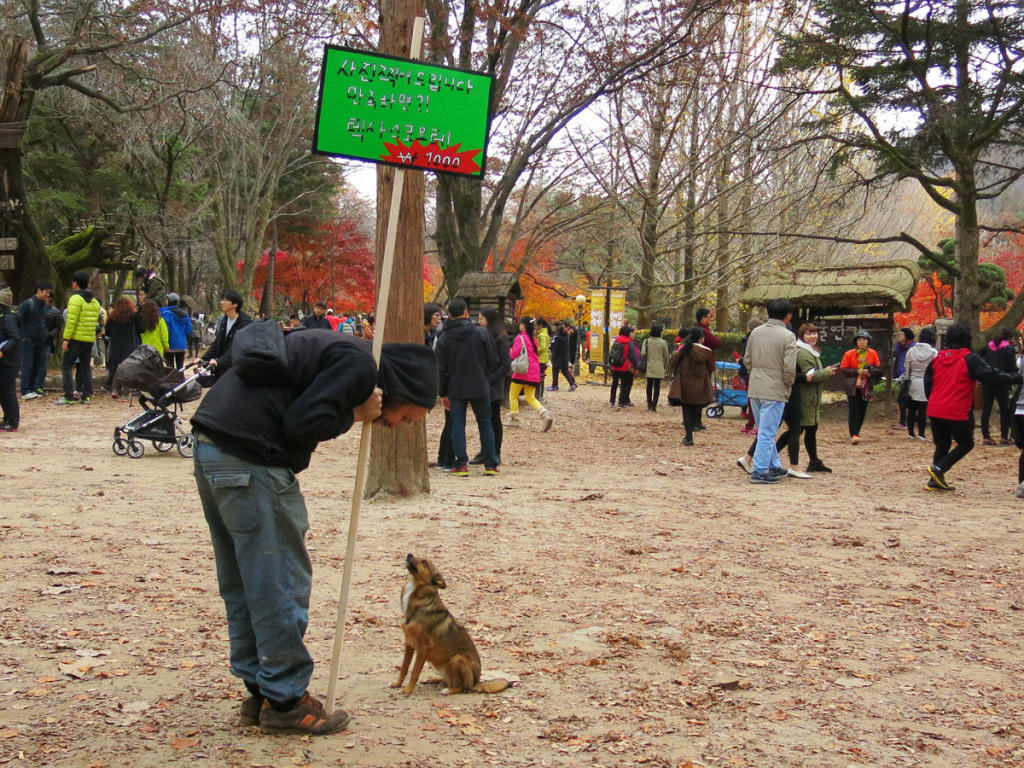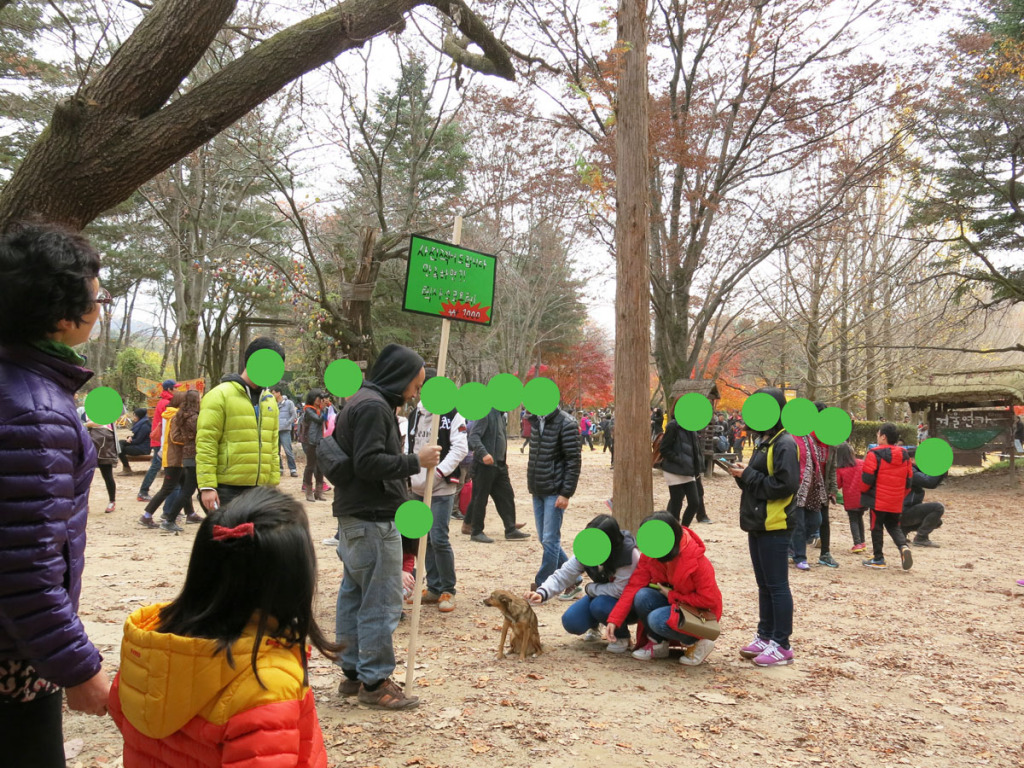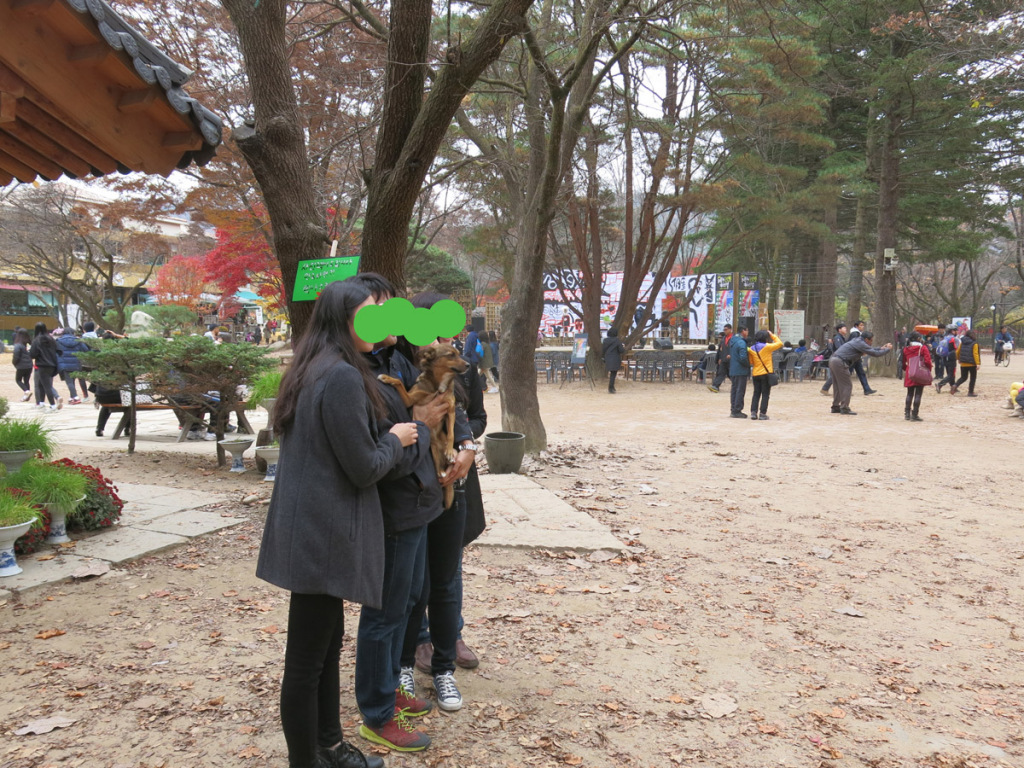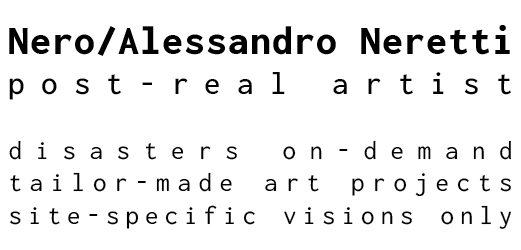FAKE TEXAS COYOTE
Nami Island Park
Nami Island/ROK
2013

FAKE TEXAS COYOTE (swindle performance), 2013 | photographs from the performance, inkjet on paper | variable dimensions

FAKE TEXAS COYOTE (swindle performance), 2013 | photographs from the performance, inkjet on paper | variable dimensions

FAKE TEXAS COYOTE (swindle performance), 2013 | photographs from the performance, inkjet on paper | variable dimensions
FAKE TEXAS COYOTE
Nero/Alessandro Neretti
FAKE TEXAS COYOTE is a performance with my dog Akamaru, who actually looks like a Texas Coyote. In the performance I offer the ‘users’ the chance of taking a photo of the ‘Texas Coyote’ in exchange for 1000 Won. It appears basic, but it disguises a series of macro/micro economic rudiments that govern the world:
•We all love small, fun, furry wild animals -(children/parents)
•A test of people’s knowledge of American wildlife – (curiosity/amazement)
•The participants’ awareness that they’re probably taking part in a ‘fraud’, but that the 1000 Won required for the photo, (less than 1Euro), makes it something they don’t have to think about – ( an economic trap/why not?)
•Being excited about ‘something new’ and having a new photo on their Smartphone that can be shared around the world thanks to social networks – (communication/connection)
The money that was raised was donated to the Nami Island/Rok Unicef Center
The world according to Nero
Pietro Gaglianò
North Atlantic area is hugely indebted to the rest of the world because of cultural colonisation. That caused countries with ancestral traditions to accept being “acknowledged” according to poor and shallow commonplaces (such as Muslim women are unhappy, Chinese people are all alike and Colombians are drug traffickers). Art debate has flourished upon those stereotypes, has built schools of thought, unassailable aesthetic theories, artists’ careers (some symbolic characters become proper stars, sometimes engaged in defending civil rights, producing gross and embarrassing contradictions) and most of those clichés have generated a thriving art market.
As a consequence, the world (i.e. the lands above sea-level and the one in the world wide web and the world that is displayed in travel agencies’ flyers and in National Geographic reports) tends to be more and more what is not, going along with preconceived ideas, either because it is what business wants or because, in most cases, it is easier or at least less risky (uniformity can be merciless towards pockets of resistance).
Nero breaks into that kind of profligacy as a superhero in the Marvel comics, as that type of dazed characters who always say the truth and are considered with great respect in small communities. He goes through the world and shuffles cards by playing with reference stereotypes (i.e. those clichés taken on by cultures in order to please foreign buyers). Nero corrupts and exaggerates those reference stereotypes, then he puts them in circulation.
Under the surface of such activities you can perceive that he thinks over what comes from matter itself, from transforming it, from the gestures, from practices and different ways of looking at things. Nero’s research moves along those two directions. He states unlikely combinations that are contradicted by a thorough analysis.
The work that Nero developed during his residence in South Korea simplifies the aesthetics of neo-colonialism according to Nero: the artist sets himself at deepen his knowledge of reality by acting within the technique of manipulating ceramics, which gives him the opportunity to test and widen his own skills too. His reassessing of the product states a rearguard point of view compared with the front guard where the tradition is displayed according to foreigners’ wishes.
Thanks to his position even closer to the genuine nature of things, Nero can afford to return to commonplace and mise-en-scene and divertissement.
That is a different way of resisting, a different way of expressing things, a different way of saying that things are not so as they seem to be, that they cannot be so and that luckily art, another side of art, exists to question the empire of platitude.
